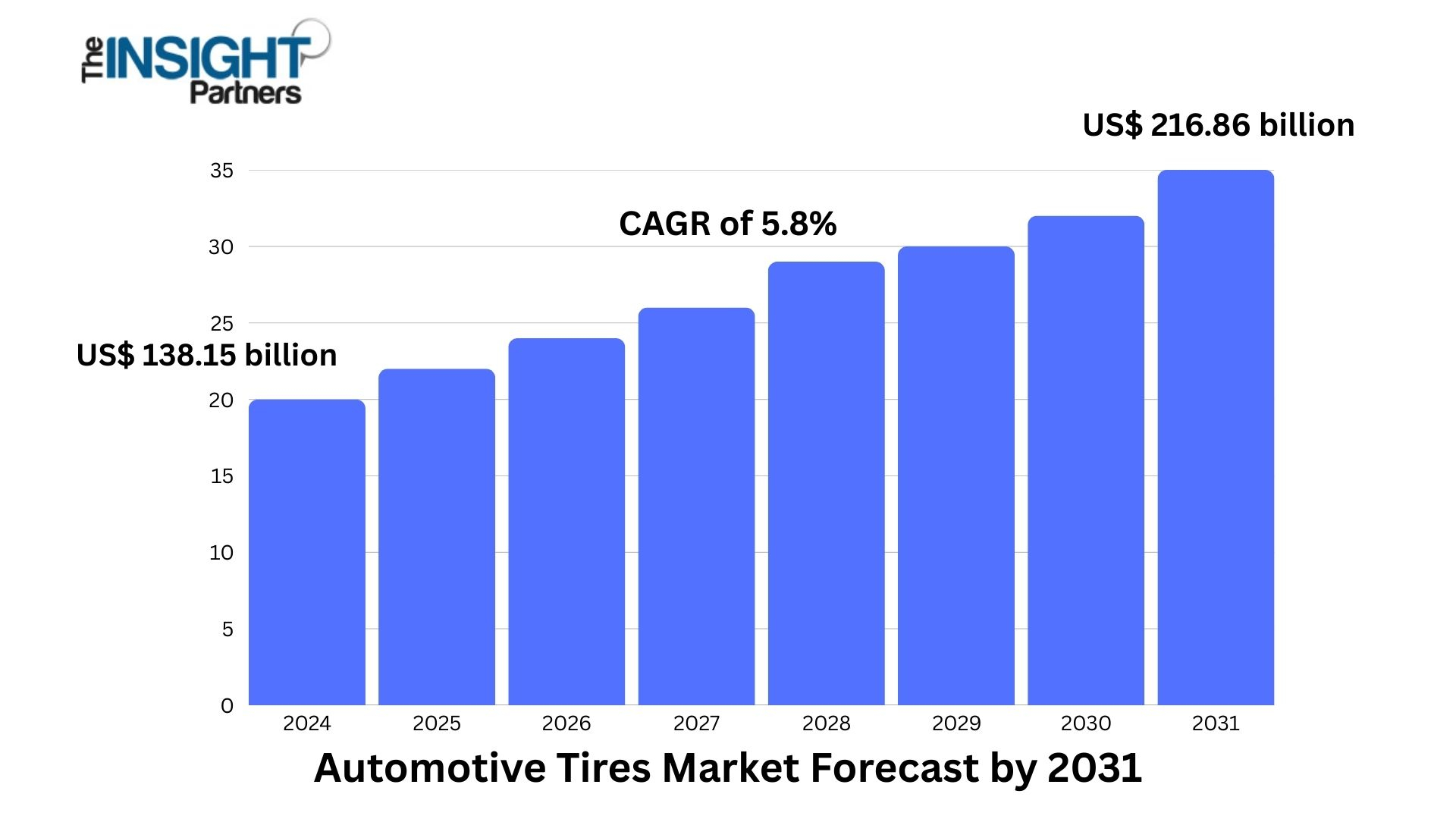The Automotive Tires Market is witnessing transformative growth as technological innovation, environmental concerns, and rising mobility demands reshape the industry. With the increasing global vehicle parc and surging demand for high-performance, fuel-efficient tires, the market is entering a robust expansion phase.
The automotive tires market size was valued at US$ 138.15 billion in 2023 and is projected to reach US$ 216.86 billion by 2031 , growing at a CAGR of 5.8% during the forecast period from 2022 to 2031 . This growth is driven by both OEM (original equipment manufacturer) and aftermarket segments across passenger cars, commercial vehicles, and electric vehicles.
Market Dynamics Driving Growth
1. Increasing Global Vehicle Production
- The global automotive industry continues to rebound post-pandemic, with rising vehicle sales across emerging economies such as India, China, Brazil, and Southeast Asia.
- Passenger vehicle sales in India alone crossed 4 million units in 2023 , boosting tire demand across OEMs and replacement sectors.
2. Rising Demand for Electric and Hybrid Vehicles
- The shift toward sustainable mobility is pushing OEMs to design tires specifically for electric vehicles (EVs), which require low rolling resistance and high durability.
- The EV tire segment is projected to grow at a CAGR exceeding 8% within the overall tire market.
3. Growing Replacement and Aftermarket Sales
- With average vehicle lifespans extending, the replacement tire segment dominates market share.
- On average, tires are replaced every 4 to 5 years , offering consistent recurring revenue to manufacturers and retailers.
4. Technological Advancements in Tire Design
- Innovations such as run-flat tires, self-sealing tires , and smart tires with embedded sensors are transforming vehicle safety and performance.
- The adoption of AI and IoT in tire manufacturing enhances predictive maintenance and performance tracking, particularly in fleet management.
Key Market Trends
- Sustainability Focus: Use of eco-friendly raw materials such as soy oil, recycled rubber, and bio-based materials is gaining traction.
- Smart Tires Adoption: Embedded sensors are enabling real-time pressure monitoring and tread wear analysis.
- Customized Tires for EVs: With rising EV penetration, OEMs are investing in tires specifically engineered for noise reduction and battery efficiency.
Challenges and Restraints
- Volatile Raw Material Prices: Rubber and petroleum-based material cost fluctuations can impact profitability.
- Environmental Regulations: Tire disposal, carbon emissions, and noise pollution pose regulatory challenges.
- Increasing Competition: Local players in emerging markets offer low-cost alternatives, intensifying price wars.
Future Outlook and Opportunities
The future of the automotive tires market lies in balancing performance, cost, and sustainability . As vehicle technologies evolve, tire manufacturers are expected to:
- Invest more in R&D for smart and sustainable tires .
- Leverage digital platforms for direct-to-consumer sales.
- Integrate circular economy models for tire recycling and reuse.
Conclusion
The automotive tires market is on a dynamic growth trajectory, fueled by the rise in global vehicle ownership, technological innovation, and the transition toward electric and sustainable mobility solutions. With a projected market size of US$216.86 billion by 2031 and a healthy CAGR of 5.8% , this sector presents a wealth of opportunities for manufacturers, investors, and technology partners alike.
Companies that prioritize innovation, sustainability, and regional expansion will be well-positioned to capture market share and stay ahead of evolving consumer demands. As the automotive industry continues to transform, the tire segment will remain a critical enabler of vehicle performance, safety, and efficiency, making it a vital component in the future of global mobility.
